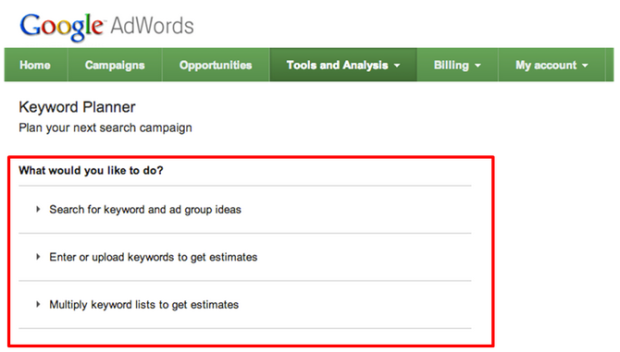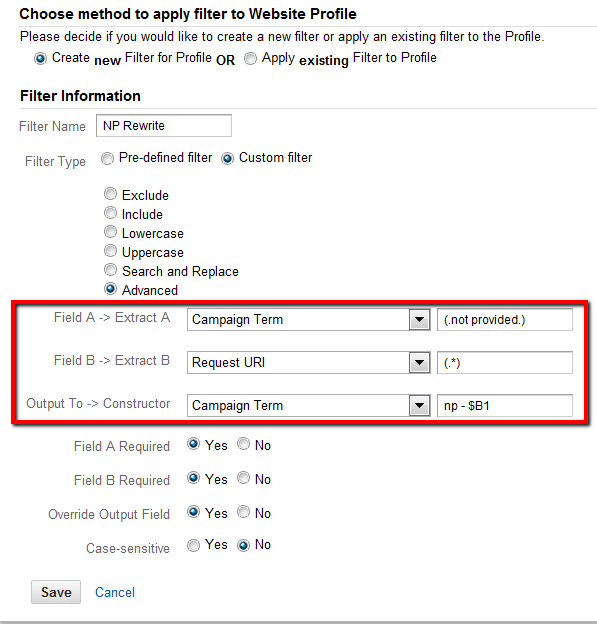Archive for category Organic Search Rankings
How To Increase Website Traffic
Posted by Rosey Broderick in Organic Search Rankings, Search Engine Optimisation, SEO, Web Marketing, web marketing management on Thursday
You have just got your new website and now you find yourself waiting for the influx of traffic followed by all those new leads or orders.
Unfortunately, a shiny new website is no guarantee of any sort of traffic to your website.
So how do your drive high quality traffic to your website. Read some of our top tips for increasing your website traffic to make the process a little easier for you.
1. Set up Google authorship. Google authorship is up there as one of the top traffic strategies of 2014. Sign up to Google plus with your personal profile and then create rel=author on your own website. This will help your articles gain authority in the search engines.
2. To get immediate targeted traffic to your website consider investing in Google Adwords. This is Google’s advertising platform and is a sure way of bringing in targeted traffic to your site along with increasing sales as a result. Keep your Adwords campaign very focused in order to get the best results.
3. Ensure that you have social media profiles set up for your business. Now, before you rush out and sign up to every social media platform out there. Pick the most suitable platform for your target customers and start with this first. It is better to have one social media platform active and performing well rather than spreading yourself too thin across too many platforms.
4. Content. Writing great content is a must in 2014. Create a guide, an infographic or post from an expert such as a guest post.
a) Do your keyword research and make sure you target relevant search terms.
b) Optimise the post including an image, Meta tags and H1 tags.
Make your activity a habit. Start slowly building your profile and engagement with your target market. Be focused on your target terms and you will start to see results in your rankings within Google. At WebResults we have helped many businesses from SME’s to multinationals implement their digital marketing campaigns successfully. Contact us now to find out how we can help you on 01 2071872 or email info@webresults.ie.
Google’s New Keyword Planner: Positives & Negatives
Google Keyword Planner
The once useful and efficient Google Keyword tool is no longer in use. It has now been reincarnated as Google Keyword Planner. This has earned a mixed response from its users, and there are both positives and negatives to be found with this new Keyword Planner application.
The Keyword Planner function is a combination of the Keyword Tool and the Traffic Estimator, which aims to give you results for both through one platform. Here is a breakdown of the positives and negatives of this new Keyword Planner.
Positives of Keyword Planner:
- A major development in the Keyword Planner is its ability to provide the volume of a keyword search at a city level, which enables organisations to segment their audience to specific geographic locations for optimum results.
- Users can now upload up to 10,000 keywords from their own list to get performance data.
- The Keyword Planner also allows users to categorise results by ad group, landing page, among others.
Negatives of Keyword Planner:
To use the Keyword Planner, users must now login to a registered AdWords account.
The Keyword Planner doesn’t offer the following;
- Match type data for search volume.
- Global vs. Local monthly searches.
- Device targeting.
Are you having problems with the new Keyword Planner?
At WebResults, we have a team of Adwords experts who know how to best use the Keyword Planner tool for optimum results. Please contact us, and we can help you set up an effective Adwords campaign, among our many other services.
How to Solve The “Not Provided” Problem in Google Analytics
Posted by Rosey Broderick in Analytics, Analytics Tools, Google Analytics, Keyword Analysis, Keywords, Organic Search Rankings, Search Engine Optimisation, Search Engines, SEO, SEO Tools, Web Marketing, web strategy on Tuesday
Google Analytics: The “Not Provided” Problem
Google analytics is a fantastic tool for viewing visitor trends and behaviour. It helps you to figure out what your website is doing right or wrong, and to see how effective your current SEO strategy is performing.
The one problem many people have with the service is its organic search terms report. In this report, you can see what search terms are giving you the most visitor traffic. However throughout this report the term “not provided” regularly appears and the content is not accessible to the business, although this information is available to those who have a paid premium account.
Why is this data hidden?
In 2011 Google updated their privacy settings, focusing on protecting those with a Google account (Gmail, Google+ etc). If a person conducts a web search through Google whilst they are logged into a Google account, then their search is conducted over a Secure Socket Layer (SSL), therefore the referral data relating to that search is hidden.
This referral data contains some very useful information, such as the keywords used to perform that search. This data is however only viewable to Google and those with a premium analytics account.
There are ways around this for you with basic accounts. One such way involves analysing landing page results. This involves mining through Google Analytics for other information that will reveal more about who your visitors were and what they were doing on your site. This involves 3 steps;
- In your Analytics account, head to Admin, then Profiles.
- Click the name of the profile you want to work with, and select the Filters tab.
- Create a new filter in your Analytics account and follow the guidelines in the image below:
After applying this filter, future keyword reports while provide some more useful information. Instead of “not provided” appearing in the report, it will be presented as
“np – / landing page”.
While this doesn’t reveal the actual search term used by the visitor, it does show you what page within your site appeared in their search result. This can give you the information of which pages within your site are appearing on search results. This new data will only be presented like this for future reports.
Why use Google Analytics?
Measure Your SEO performance:
With Google Analytics you can analyse your current SEO strategy and see what keywords are working for you. It will also show which pages on your site are most popular. You can assess the amount of traffic coming into your site, and quantify goals and conversions. If you have any questions regarding Google analytics, please contact us.
Measuring SEO Success
Posted by Rosey Broderick in Analytics, Analytics Tools, Google Analytics, Keyword Analysis, Keywords, Organic Search Rankings, Search Engine Optimisation, Search Engines, SEO, SEO Tools, web strategy on Monday
Measuring SEO Success:
Having put a lot of time and effort into devising a SEO strategy, it is now time to measure how effective it actually was. To do this there are three key performance indicators (KPI) to look at; 
- Rankings
- Traffic
- Conversions
The information gathered from these KPIs can be used to both measure the success of this campaign and provide valuable information for future campaigns.
Rankings:
Keyword rankings are a key component of the SEO process with the websites who are listed on the first page receiving up to 92% of the traffic share (Searchengineland.com, 2012). Over time a business can track keywords and see how effective each are with the ability to change them at any time. Keyword analysis involves some trial and error as a business might find out overtime that a keyword is just too broad and competitive for their business to rank high for.
Traffic:
Having your site appear on the first page of a search engine isn’t enough to classify a SEO campaign as a success. The traffic volume and quality of a search term must also be analysed. Traffic volume should be measured based on the number of visits that come from organic search. With a successful SEO strategy, there should be a significant increase in organic search traffic over time.
How much traffic you should expect depends on the size of your target audience. For example, a successful SEO campaign that targets people who are looking for a nationwide online retailer will deliver significantly more organic search traffic than a successful campaign targeting people who are looking for a local hairdresser.
Within this volume of traffic, the quality of the traffic must also be analysed. Some areas of interest when determining the quality of such traffic include, pages per visit, average visit duration and bounce rate. You are essentially looking for a high average duration with a large amount of pages visited whilst keeping your bounce rate low.
Conversions:
Through web analytics you can determine what you consider to be a goal or a conversion. This could be something like a visitor completing a subscription form or contacting the business. When these conversions are set up by you, you can use Google Analytics to track and record each conversion as it happens. You can even track each page a visitor viewed leading up to the conversion to see what links they clicked on etc, this can be done with tools such as mouseflow. Sales aren’t essential from first time visitors, it is good to make them aware of your brand and have them complete some form of conversion which will keep you in their minds for future reference. After analysing your conversions you can also pinpoint which keywords from organic search results attracted each visitor.
Conclusion
Tracking these KPIs will not only allow you to measure your SEO campaign’s current performance, but it will also provide you with vital data to help ensure your next campaign is a success. For more information on measuring SEO or any other marketing activities, please contact us
Inbound Marketing Essentials
Inbound Marketing Essentials:
Inbound Marketing is seen by many in the industry, as an essential tool for naturally attracting a wide range of potential customers.  Inbound Marketing is a non aggressive approach to making your business known to new customers and forming a bond with current ones. When it comes to good Inbound Marketing practice, here are some of the essentials.
Inbound Marketing is a non aggressive approach to making your business known to new customers and forming a bond with current ones. When it comes to good Inbound Marketing practice, here are some of the essentials.
Know Your Customers:
A huge factor of Inbound Marketing is providing relevant and useful content / information for your target market. To do this you need to know who your customers are and what they are interested in. A breakdown of customer demographics and interests would be ideal.
Research Keywords Relevant to you:
Carry out a keyword analysis for words and terms associated with your business. The objective is to target keywords with a high search rate. Have your keywords as specific as possible to approach your target market rather than approach a broad and unreliable market.
Have a Strategy for your Content: (Know your Objectives)
Be sure to speak to your customers about content relevant to your industry. Your aim is to speak to each customer type at each level of the “sales funnel” (Leads – Opportunities – Proposals – New Customers).
Create Content Frequently:
Your aim is to now create educational, thought provoking content related to your business area. Think of what you would be more likely to share or comment on, don’t focus on sales and talking about what you do. You need to be doing this at least once a week to keep your site fresh.
Insert Links:
Having both internal and external links throughout your content can both help with user experience and encourage inbound links from those external websites. Try to fit in maybe 1 or 2 links in your content.
Include Images:
Images help break up the content for the reader making the content more presentable when done correctly. Include an image title and alt text so that search engines can pick them up.
Incorporate Calls to Action:
After reading your piece of content, give the reader something to do or somewhere to go, ideally back to your website!
Share on Social Media:
Social Media sites provide a great platform for you to get your content out there and shared. It is a great opportunity for creating more inbound links to your site.
Why use Inbound Marketing for Your Business?
Build Your Business Profile:
Present your business as the experts in your field offering relevant, helpful information, updates, tips and advice. Generally information that is helpful to your clients and prospects when they are in the market for your products/services.
Give Personality to Your Brand:
Inbound marketing enables companies to express themselves in an informal manner. They can show what their company is passionate about and what motivates them.
Build Your Business Profile on the Web:
By offering interesting, engaging content, your contacts and followers will share your information with their contacts, building your community and getting your business in front of new prospects.
Engage With Customers:
Inbound marketing enables your company to engage with your customers on personal level
and build strong relationships. It makes your company more approachable to the public.
Improve Your SEO:
Effective inbound marketing will improve your SEO. The search engines are placing more and more priority on social media activities and links when presenting search engine results. By focussing on the terms that are most relevant and building content around them on both social networks and your site, you will build up your rankings on the search engines for terms most relevant to your business. At Webresults.ie we can help you create a successful content strategy that will maximise your SEO and social media activity to drive sales for your business.
If you would like to find out how to devise and implement a successful inbound marketing strategy for your business that will build your profile and drive more high quality customers to your business, please contact Webresults.
Content Writing: An Inbound Marketing Essential
Posted by Rosey Broderick in Blogging, Organic Search Rankings, SEO, Social media, Wordpress on Monday
Content Writing:
Content writing is a form of inbound marketing which many marketers having taken a great interest in. This involves writing blogs or articles about topics which relate to your company. This content is given out freely to the public and is a good way of connecting with your customers and sharing your knowledge presenting you as the expert in your field.
The content will involve a mix of topics and formats around topics that are relevant to your target market and information that will help them move closer to using your services or purchasing your products.
The approach is not promotional and doesn’t involve hard sales language. The content is more focused on relevancy, interesting, compelling and practical information. The content could be a review of a new product or a piece on the changing environment of an industry, a relevant event or a question or comment to get engagement or interaction from the reader It should help draw parallels between what is important to the customer and what the company stands for.
Research carried out by Hubspot revealed that those who blogged recorded 55% more visitors than those who didn’t, showing the power good content can have. However, for this content to succeed in warming your brand to current and potential customers; it has to be good!
9/10 Business to Business (B2B) companies say that they will be producing more content than they did last year. This means that there will be a constant stream of content covering every area of business. So you will need to make your content stand out from the crowd and be beneficial to the reader, offering good advice and a critical outlook, so that it has a relevant impact on the customer’s viewpoint.
When writing a blog try to create educational, thought provoking content related to your company. Think of what you would be more likely to share or comment on, don’t focus on sales and talking about what you do.
Your website and blog content should be used in conjunction with other inbound marketing tactics such as SEO and Social Media, including the search terms you are targeting as a business so that your content will show up in search engine results.
Social media is a great tool for making people aware of your website content or your blog. By leaving links to your blog on social media sites, customers might then explore the rest of your site having read your piece. This could lead to sales and feedback.
Why use content writing?
Build Customer Relationships:
- With good content writing you can build strong relationships with current and potential customers. At Webresults we can help you devise a content plan and create strong and compelling content
Give Customers an insight into you:
- Good content writing can give customers an insight into what it is your company is passionate about and puts a human voice behind the brand. This will build trust with your customers
Create Natural Interest:
- Content writing is a good way of gaining natural interest in your brand from potential customers. Customers will also view your brand more favourably to those who force advertising at them constantly
Building your rankings on the search engines:
- Publishing relevant content, that is optimised and around topics that your target market are searching around and interested in, will offer more opportunity for the search engines to pick up your information pieces/articles and by your readers liking and sharing your content, they are giving the search engines more reasons to rank your content above other similar content.
Present you as the expert in your field- Having a strong content plan will build the profile of your business as well as your own professional profile, giving more credibility in your business and your services.
For more information and advice on good content writing, contact us at: http://www.webresults.ie/contact
3 SEO Musts
 Are you struggling with your sites SEO and ranking? Read our 3 musts of SEO now to see how you can improve your website and it’s search engine ranking!
Are you struggling with your sites SEO and ranking? Read our 3 musts of SEO now to see how you can improve your website and it’s search engine ranking!
To read the full article, visit 3 SEO Musts.
For more information on search engine optimisation and web marketing, contact us. For more information on this topic, click here.
Link Building Through Directories, Is It Worth It?
 Do you still directories for link building? Read our article for more information about this form of SEO booster and see if you have been doing it the best way for your business!
Do you still directories for link building? Read our article for more information about this form of SEO booster and see if you have been doing it the best way for your business!
To read the full article, visit Link Building Through Directories, Is It Worth It?
If you need more help with your SEO, link building and web marketing – contact us. For more information on this topic, click here.
Keyword Research, SEO Vs PPC
Posted by Rosey Broderick in Keyword Analysis, Keywords, Online Advertising, Organic Search Rankings, Pay Per Click, PPC, PPC Tips, PPC Tools, Search Engine Optimisation, SEO, SEO Tools, Web Marketing, web marketing management, web strategy on Friday
 Do you treat your SEO and PPC keyword research the same? Read our article to find out why they’re different and why your keyword analysis should be carefully thought about.
Do you treat your SEO and PPC keyword research the same? Read our article to find out why they’re different and why your keyword analysis should be carefully thought about.
To read the full article, visit Keyword Research, SEO Vs PPC.
For more information on SEO, PPC and web marketing, contact us. For more information on this topic, click here.








